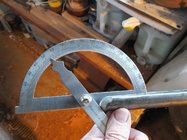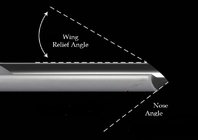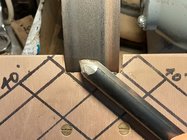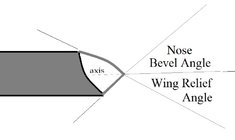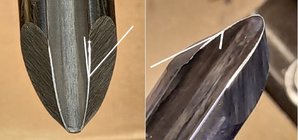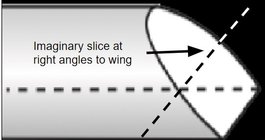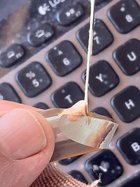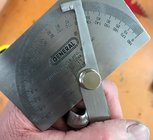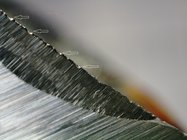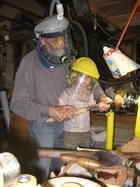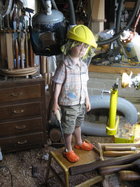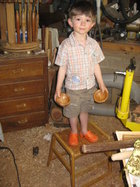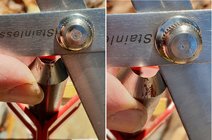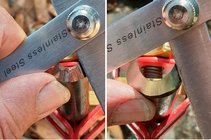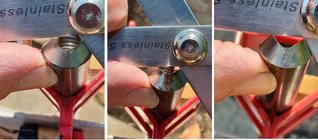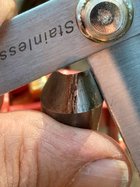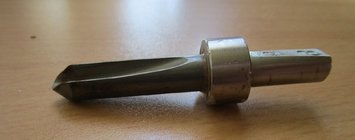Part 3: What wing edge angle do you have on that bowl gouge?
... this is the bowl gouge that has a nose angle of 55° and a wing edge angle of 62.5°…
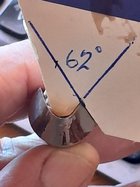
Note: If we do not measure the Wing Edge Angle with the card square to the wing edge we get an incorrect lower angle reading.
Many of you will also know that you get different Wing Edge Angles on gouges that have the same nose bevel angle but different flute profiles, e.g….
Thompson V with 55° nose bevel angle - 55° wing edge angle
Thompson/Jamieson V with 55° nose bevel angle - 55° wing edge angle
D-Way V with 55° nose bevel angle - 40° wing edge angle
Crown with 55° nose bevel angle - 40° wing edge angle
~~~
Ellsworth/Crown Parabolic with 65° nose bevel angle - 60° wing edge angle
Woodcut Parabolic with 65° nose bevel angle - 60° wing edge angle
Henry Taylor Parabolic at 65° nose bevel angle - 60° wing edge angle
~~~
Thompson V at 45° nose bevel angle - 45° wing edge angle
Of course, where there is a difference in the nose and wing edge angles there will be a transition between the two towards the nose.
With platform sharpening the nose bevel angle is determined by the platform angle but the wing relief angle and wing edge angle is entirely in the hands of the sharpener.
With swing leg bowl gouge jigs it is the slide setting that determines the wing edge angle and the swing leg setting determines the nose bevel angle. Within limits, we can make adjustments to the slide setting to get our preferred wing edge angle; closer to the wheel will give a more acute wing edge and further away will give us a more obtuse wing edge.
For example, if I move my slide in by just 10mm with my jig set for a 55° nose angle grind it will reduce my wing edge angle from 62.5° to 40° resulting in a 22.5° finer wing edge, which is a significant difference.
What wing edge angles are you using?

